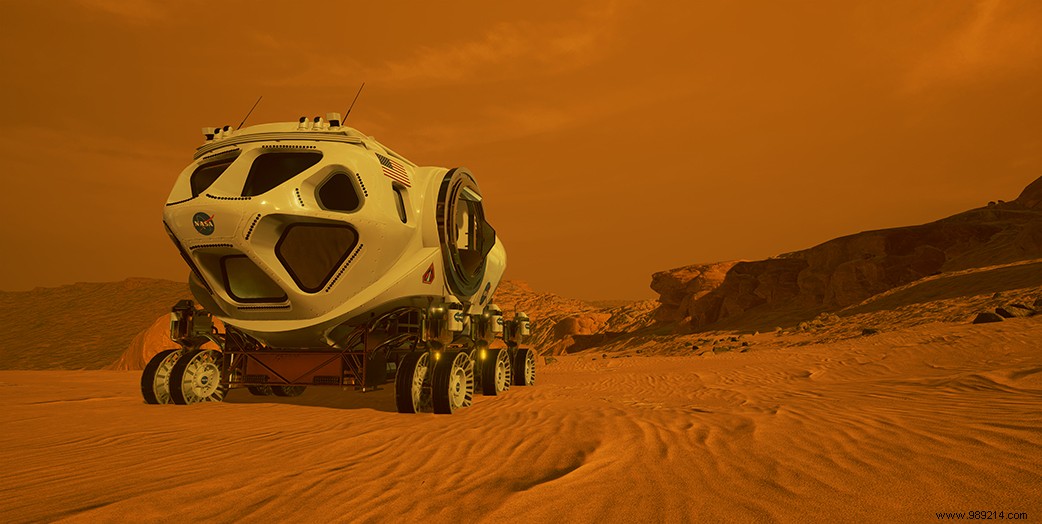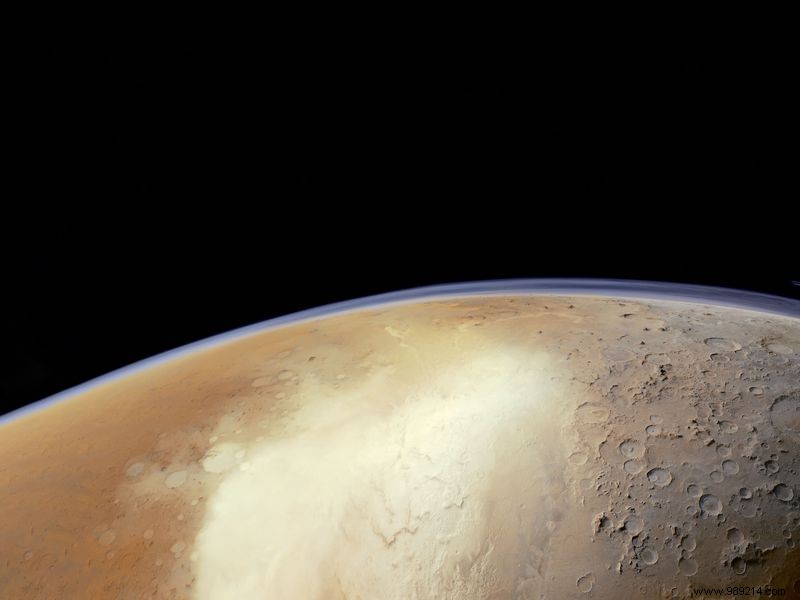A new biomaterial designed by American researchers could ultimately protect astronauts from harmful radiation during Mars missions.
Leaving aside the technical challenges inherent in a manned trip to Mars, there are inevitably radiation issues. The main examples are ultraviolet and gamma rays, produced by the Sun, or cosmic rays from interstellar space.
On Earth, we are safe from these harmful attacks thanks to our thick atmosphere . This is why, during our evolution, we have not developed means allowing us to protect ourselves from it. On Mars, where the atmosphere is very thin, it's another story. And inevitably, our bodies are not at all prepared.
“The doses of radiation accumulated in interplanetary space will be several hundred times higher than the doses accumulated by humans over the same period on Earth, and several times higher to the doses of astronauts and cosmonauts working on board the ISS “, recently explained Jordanka Semkova, of the Bulgarian Academy of Sciences.
Science is still trying to understand the effects of cosmic rays on the organism. However, we already know that these could affect our cells and lead to the development of cancers.
An experiment conducted in 2015 also pointed out that this radiation can impact the brain. Other simulations, done on mice, have suggested that space travel could seriously damage the gastrointestinal tissues of astronauts.
If we have to go to the Red Planet, and NASA is already thinking about it, then it will be necessary to imagine new means of protection . And for good reason, more "traditional" countermeasures - such as the use of water or lead - tend to be cumbersome, which will significantly increase the costs of these future deep space missions.

Nathan Gianneschi and his team at Northwestern University in Evanston (Illinois, USA) have been working for several years on the development of a "space sunscreen" in melanin base.
We all know these natural pigments. They are the ones that, among other functions, provide humans with their skin and hair colors, and protect us from the Sun's ultraviolet rays.
Animal melanins are divided into two main forms:eumelanin and pheomelanin . The former is responsible for dark colors, such as those of skin and hair, while pheomelanin, which contains the element sulfur, tends to provide reddish hues.
You should also know that pheomelanin absorbs X-rays much more efficiently than eumelanin. Knowing this, the researchers worked on pheomelanin derived from rooster feathers in order to make this pigment even more protective .
As part of this work, they replaced sulfur with selenium, an element known to play a role in preventing cancer in organisms. In doing so, they created "selenomelanin".

In lab experiments,selenomelanin-treated skin cells then ignored X-ray doses that would otherwise have been lethal to a human . Selenomelanin, absorbed into the cells, formed what the researchers call "microparasols", thereby protecting their cell nuclei, where DNA is stored.
Furthermore, additional tests have shown that modified selenium-fed bacteria can also produce selenomelanin. For the researchers, this means that the substance can be manufactured directly in space . Which, again, would be very practical in the context of Martian missions.
Obviously, this new substance will still have to be tested on human beings, then directly in space, in order to assess its degree of protection. If successful, it could then directly integrate the clothes and spacesuits of astronauts.